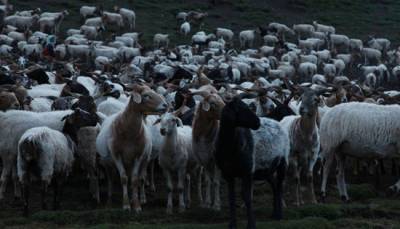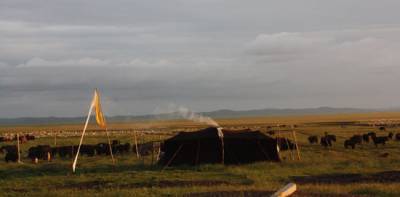2. What alternative models are there among pastoralists in these provinces?
From our fieldwork, an alternative model that we’ve observed is the tradable grazing right system, which we termed the hybrid institutional system. The hybrid system considers both market-based and community customary institutions in rangeland management.
In this system, herders converted the rangeland use-rights into grazing rights, which is determined by the total rangeland use-rights of a household divided by the total number that household owns in each year, so that they can enforce their rights for compensation. But at the same time, they maintain their collective use of rangeland resources so that they can move livestock around in a flexible way.

3. How have local communities adapted to or taken up the market-based reforms?
After these reforms, when the herders saw an increase in the market values of rangeland resources, they wanted to clarify their rights and set up market-based institutional arrangements to distribute their resources. But they didn’t want to lose the community organisation and collective use of rangeland resources. So they set up diverse, hybrid institutional arrangements.
The ‘tradable grazing right system’ is an example of this. The government had promoted rangeland use rights, but the community converted this into a grazing quota to clarify the grazing rights of an individual household. The grazing rights give individual households the right to claim compensation based on their annual grazing quota. At the same time, the herders maintain community customary institutions to enable livestock to be kept mobile.
In this case, customary and market-based institutions interact to form complementary and embedded relations which target different aspects of rangeland management. The constructive interaction between the local government, community and individual households plays a crucial role in developing and maintaining this institutional arrangement.
4. What are the positive and negative outcomes for pastoral communities? What are the ecological outcomes of the reforms?
Our case study compares the economic and ecological outcomes in two pastoral villages in Qinghai Provinces. One village implemented a Rangeland Transfer System based on the Rangeland Household Contract Policy (RHCP) (see question 1). The other village initiated a tradable grazing right system.
We found different results in each village. Both systems increased livestock production costs. But the first village had higher livestock mortality and a lower livestock production level than the second. The second village also had higher household income levels, because the income is comprised of market-based income, consumption-based income and herd-size income. Their income also varied less from year to year.
As for the ecological outcomes: even though the rangeland transfer system facilitates certain livestock movements, those movements are still restricted between individual grazing parcels, with no movement on a larger scale. In addition, the herders who rent in rangelands use it as an opportunity to shift their grazing pressure so that their personal grazing can rest. Therefore, the grazing pressure is more concentrated and higher under the rangeland transfer system than it is to tradable grazing system, and as a result, the level of rangeland fragmentation is higher in the rangeland transfer system.

5. What are the policy spaces for market-based policy and community-based practices to work together in the policy process?
We identified three policy spaces in the implementation processes of market-based institutional arrangements where possible changes could be articulated.
Firstly, clarifying and securing individual rights in rangeland management is important, but this doesn’t mean that community organisations need to be dismantled, or that physical boundaries need to be built between households to clarify the rights. Secondly, there is room for more constructive interaction between local government, community and pastoral households in rangeland management practices. Thirdly, policy processes are contingent and uncertain. So future rangeland management policies should be open to institutional innovations that emerge in the implementation processes, which have better outcomes in actual practice.
(Photo: Gongbuzeren)
